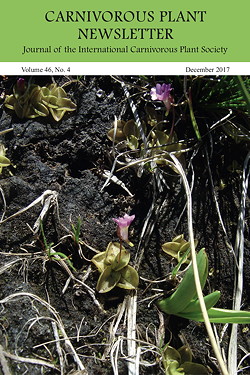International Carnivorous Plant Society
Carnivorous Plant Newsletter Archive
Drosera hybrida, the next generation
John Brittnacher
Carniv. Pl. Newslett. 46(4):139-147
Published 16 November 2017
https://doi.org/10.55360/cpn464.jb867
Summary
Drosera hybrida is an example of a potential instant species in that it immediately becomes a new independent evolutionary unit when a fertile population arises in the wild from its sterile, hybrid progenitors. The parents of the hybrid are the unlikely pair D. filiformis and D. intermedia. Sterile natural hybrids have been found and are known in New Jersey but no fertile plants have been found there yet. Fertile hybrids were found in California where the plants were planted out in a protected botanical area, so it is quite possible that someday fertile plants will also be found in its native range.
Keywords: hybrids, Drosera hybrida
Article Citation
John Brittnacher. 2017. Drosera hybrida, the next generation. Carniv. Pl. Newslett. 46(4):139-147. https://doi.org/10.55360/cpn464.jb867
Page views: 1041
©2025 International Carnivorous Plant Society
www.carnivorousplants.org
This page is maintained by John Brittnacher.
Please contact us at our membership website, icps.clubexpress.com.
Privacy: The Carnivorous Plant Newsletter Archive website does not track users.

